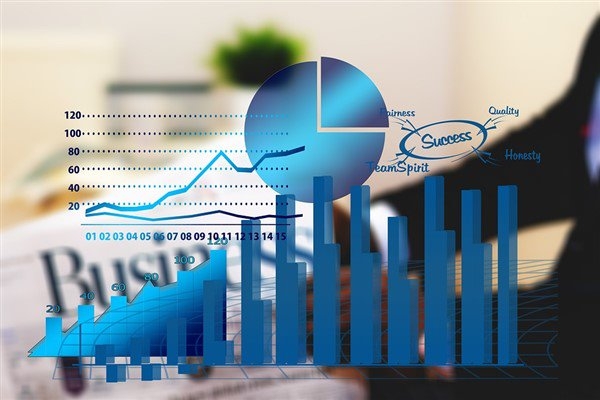14215,79%0,33
42,84% 0,06
50,65% -0,05
6179,38% -0,20
10014,28% 0,39

While waiting for FOMC. The FOMC meetings are important for the trend in economic variables in the recent and forecast horizon because any change in federal funds rate expectations will affect a number of economic variables such as short-term interest rates, exchange rates, long-term interest rates, employment output, and prices of goods and services. If the FOMC lives up to expectations and chooses a 50 basis point increase, it will bring the fed funds rate between 4.25% and 4.5%. The bond market is pricing in a 68% probability that the federal funds target range will rise to 5% by March 2023.
Current inflation outlook and moderate pace in interest rates. According to the data released on November 10, the annual inflation rate of the US, which had increased by 8.2% before, is 7.7% for the 12 months ending in October 2022. The next inflation update is scheduled for release on December 13. In 2022, the post-COVID-19 pandemic period, inflation had reached 9.1%, the highest rate since 1982. On the basis of the personal consumption expenditures index (PCE), 12-month inflation decreased to 6% in October. Core inflation (excluding food and energy), which can be a sensitive indicator for the actual trend in traditional products and services, has declined to 6.3% on CPI basis and 5% on PCE basis.
According to John Taylor, monetary policy is the main cause of the increase in inflation. “Inflation rises when the Fed sets an interest rate that is too low or growth in the money supply increases too quickly,” Taylor says. The aforementioned easing in inflation is good news for the moderate course of interest rates. However, inflation has still recorded a very moderate decline from its peak, and the world's encounter with new supply shocks has the potential to disrupt the inflation plan. In just 10 months, the Fed will have brought interest rates from near zero to 4.50%. This is the fastest and hardest tightening in the last 40 years. The main reason for a tight tightening close to the 1980 model is the anti-inflation campaign.
The fact that current PPI data point to a harder-than-expected cost pressure still creates uncertainty. This may cause the CPI to decline slowly and stubbornly. As much as the risk of recession from an aggressive rate hike, there is also the risk that insufficient tightening will not reduce inflation sufficiently.
Revision of economic expectations and terminal interest issue. According to forecast materials published in September, the Fed increased its final rate above 4% for 2022 and 2023. The final rate, the peak at which the federal funds rate is expected to rise before lowering, was raised to 4.4% for 2022 from a forecast of 3.4% in June. This rate will be reached with the expected 50 bps rate hike as of Wednesday. As a key issue, the terminal interest rate for 2023 was projected at 4.6% in September, and market pricing suggests that rate could rise to 5% in March 2023 and stay at its peak until at least July.
In other words, the main indicator we will take is not the almost certain 50 bps increase on Wednesday, but where the terminal or ceiling interest rate is expected in the next period and how long the maximum tight conditions will continue. The rate of rate cuts foreseen for 2024 and 2025 is also important in terms of the timing of this, because we will have to look at how long the ceiling level will be valid.
Powell's comments and the November FOMC meeting notes indicated that a slower rate hike should now be made. But in terms of destination, the Fed also thinks it's not done yet.

Index of Concern: Probability of Quarterly Downfall in Quarterly Real GDP, 1970:Q4 - 2023:Q4… Source: Federal Reserve Bank of Philadelphia, Bloomberg
Recession probabilities. The US economy grew 2.6% YoY in 3Q22, registering its first increase in 2022 and a sharp turnaround after six months of contraction despite persistent fears that the country is at risk of recession.
The level that rate hikes will reach and the time period during which high interest rates will be valid are important. This should accelerate the decrease in inflation, but it can be understood that it will also create a cost in the form of a significant loss of momentum in the economy. The Fed has been implementing a significantly tightening monetary policy for the last year, and economic growth has been sending signals of slowdown in this period, which has already been reflected in its figures.
The recession seems inevitable, and it looks like it will get stuck somewhere in the period of maximum tightening in 2023. The length of time the Fed keeps rates at or above 5% can also affect the duration and nature of a recession.
Conclusion? The fact that the Fed's work is not done is 'hawkish', and that inflation has decreased 'dovish' forms the basis of expectations. However, the lower signals show that a 2-month data realization should not affect the early and broad-term expectations yet to declare victory in monetary policy. The reflection of the implemented monetary policy relative to demand movements and sectoral reflections is delayed, so it is understandable that the end point of the increase in interest rates has not yet been reached. The point to be reached as of December will be reached with slower interest rate increases. The validity period of the economy-restricting rates is more important, and the slowing rate increases are actually related to the approach to the last point.
Kaynak: Tera Yatırım-Enver Erkan
Hibya Haber Ajansı

Veri politikasındaki amaçlarla sınırlı ve mevzuata uygun şekilde çerez konumlandırmaktayız. Detaylar için veri politikamızı inceleyebilirsiniz.